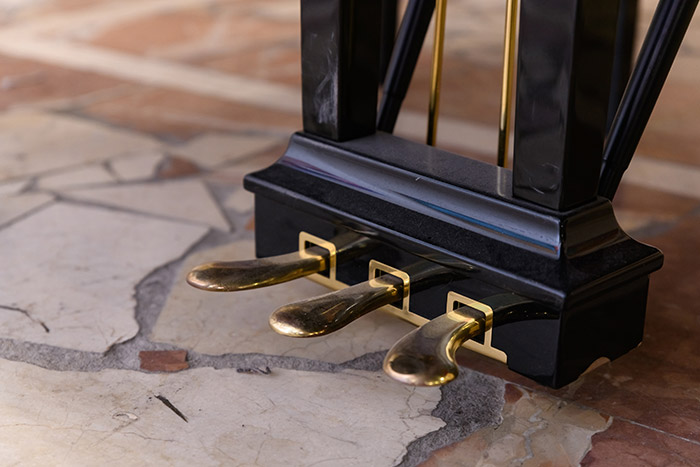Playing chords on the piano is a foundational skill for any aspiring musician. From classical to jazz, pop to rock, chords are the building blocks of music, providing the harmonic framework upon which melodies and rhythms are built.
Mastering technique is essential to playing chords like a professional. In this article, we’ll explore four key techniques that will help you elevate your piano chord playing to a professional level.
So read on to make sure your chordal techniques are up to par and ready to assist you with your pianistic expression!
Hand Shape
The first step to playing chords like a pro is to adopt the correct hand shape. Begin by positioning your hands with relaxed fingers, slightly curved as if holding a small ball. Avoid tensing your hands or stretching your fingers too wide, leading to fatigue and inefficiency. Aim for a natural, relaxed hand position that allows your fingers to move freely across the keys.
When playing chords, distribute the weight evenly across your fingers, with your fingertips making contact with the keys. Avoid pressing too hard or using excessive force, resulting in a harsh, percussive sound. Instead, focus on using controlled movements and gentle pressure to produce a balanced and resonant tone.
Strain can also cause injuries, so make sure you stay relaxed and free during your body movements!
Use Force from the Back
To achieve a full, rich sound when playing chords, it’s important to engage the muscles in your arms and back. Rather than relying solely on the strength of your fingers, draw energy from the larger muscles in your back and shoulders to support your playing. Imagine pushing into the keys from the back of the piano, using the weight of your arms to produce a powerful yet controlled sound.
By harnessing the force from the back, you can achieve greater dynamic range and expression in your chord playing. Experiment with varying degrees of pressure and intensity, adjusting your technique to suit the musical context.
Whether playing softly or forcefully, strive to maintain a fluid and relaxed posture, allowing your movements to flow naturally from your body’s core.
Grip the Fingers Inward
Another technique that can enhance your piano chord playing is to grip the fingers inward towards the palm of your hand. Rather than splaying your fingers outward, focus on drawing them inward towards the centre of your hand. This inward grip helps to stabilise your fingers and promotes greater control and accuracy when playing chords.
Visualise each finger as a separate entity when forming chords, working in harmony with the others to create a unified sound. Keep your fingers close to the keys, hovering just above the surface to minimise excess movement. By maintaining a compact and efficient hand position, you can execute chords precisely and clearly, allowing each note to ring out with clarity and resonance.
Know What Types of Sound You Want
Finally, to play chords like a professional, you must clearly understand the types of sounds you want to produce.
Experiment with different chord voicings, inversions, and embellishments to create diverse textures and colours. Consider the mood and atmosphere of the music, and adjust your playing style accordingly.
Whether aiming for a lush, romantic sound or a punchy, rhythmic groove, tailor your chord playing to suit the musical context. Listen closely to recordings of professional pianists across various genres, studying their techniques and approaches to chord playing. Draw inspiration from their musicality and expressiveness, and strive to incorporate elements of their style into your own playing.
Conclusion
Mastering piano chord playing is a journey that requires dedication, patience, and a willingness to explore new techniques and ideas. By focusing on hand shape, utilising force from the back, gripping the fingers inward, and knowing what types of sound you want to produce, you can elevate your chord playing to a professional level.
Remember to practice regularly, listen attentively, and play with passion and conviction. With time and effort, you’ll develop the skills and confidence needed to excel as a pianist and musician.
For some basics on jazz chords – you can also read the following article on jazz chords for beginners!
Have fun playing chords and piano, and do a lot of experimentation with voicings. In time, you will play like a pro!











